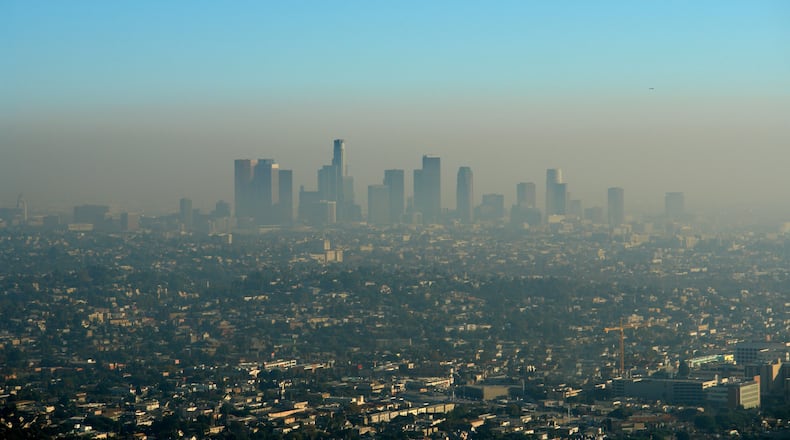More than 43% of Americans live in counties where the air is considered unhealthy including five metro area counties that received a failing grade for ozone pollution.
On Wednesday, the American Lung Association released its annual “State of the Air” report featuring the most current air pollution data from federal, state and local governments. The data measures the two most widespread types of air pollution — smog (ozone) and soot (particle pollution).
“There is no clearer sign that we are facing new challenges than air pollution levels that have broken records tracked for the past twenty years, and the fact that we had more days than ever before when monitored air quality reached hazardous levels for anyone to breathe,” said American Lung Association President and CEO Harold Wimmer in a statement.
In metro Atlanta DeKalb, Fulton, Gwinnett, Henry and Rockdale counties all received an “F” for ozone pollution levels tracked from 2015 to 2017, the three year period measured in the report.
Ground level ozone is created by a chemical reaction between sunlight and pollutants from cars, power plants, refineries and other sources and is more likely to form in warmer weather. Increased heat was likely the cause of the increase in ozone, according to the report.
>> RELATED: Atlanta reached record-smashing 80 degrees
Though ozone pollution was high across the metro area, Atlanta tracked fewer days with high ozone levels than in the previous three-year time period. However, the average level of soot in the air worsened according to the report landing Atlanta among the top 25 cities with the highest levels of year-round particle pollution.
Particle pollution, a mix of microscopic liquid and solid particles in the air has been linked to development of asthma in young children, increased risk of death from cardiovascular disease and other health concerns.
>> RELATED: Your guide to an (almost) allergy-free home
Six cities and metropolitan areas in the U.S. are considered the cleanest with zero high ozone or high particle days including Bangor, Maine; Burlington-South Burlington, Vermont; Honolulu, Hawaii; Lincoln-Beatrice, Nebraska; Palm Bay-Melbourne-Titusville, Florida and Wilmington, North Carolina.
About the Author
The Latest
Featured



